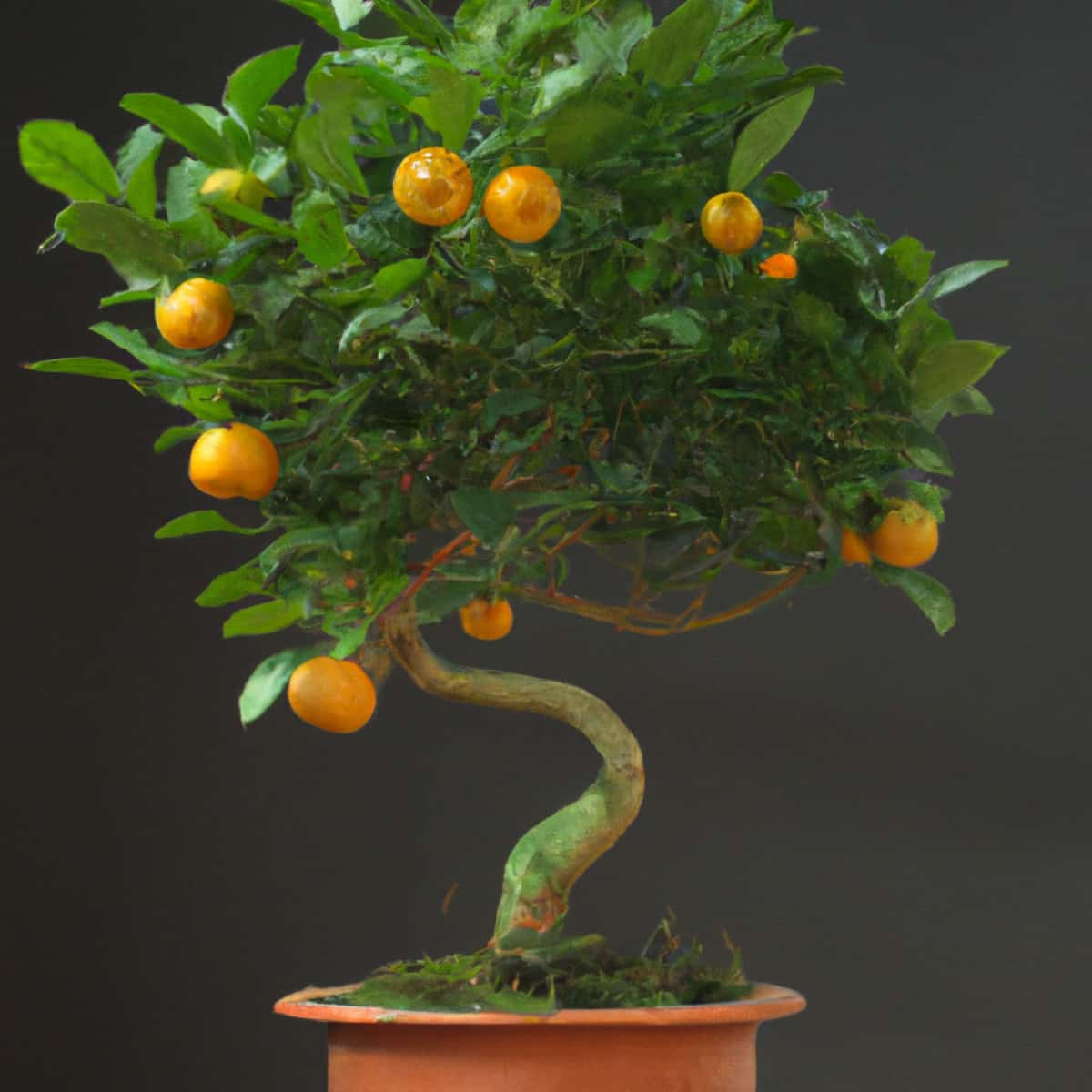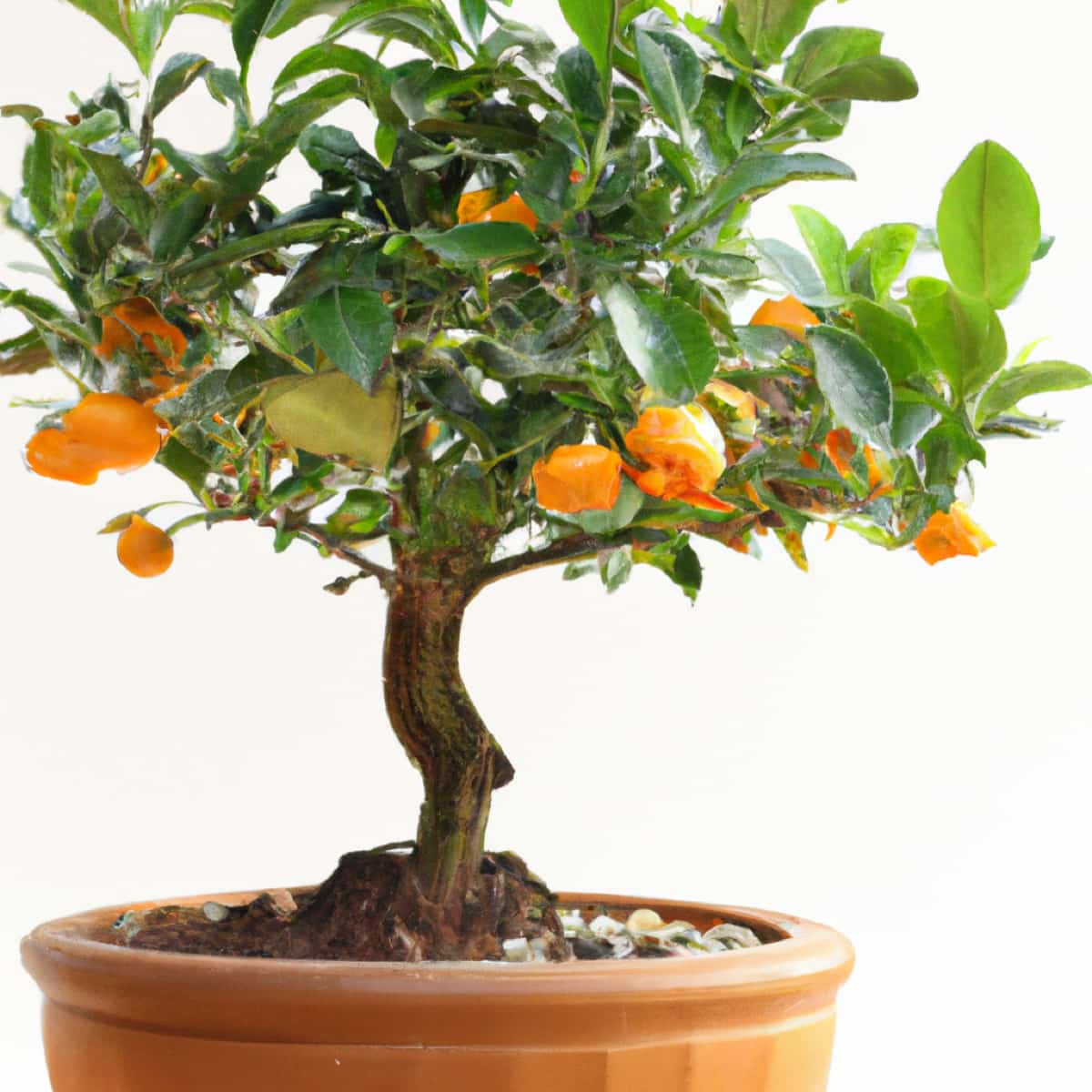Cultivating bonsai trees is a serene and rewarding pastime, a delicate balance of art and nature, and the Calamondin, a popular choice among enthusiasts, is no exception. An emblem of patience and commitment, the Bonsai Calamondin is unique with its miniature, bright orange citrus fruits and glossy green leaves, radiating vibrancy and beauty.

But how do you take care of Calamondin bonsai? The answer lies in understanding its needs and providing the right environment. This detailed guide will take you through everything, from choosing the right Calamondin bonsai to its planting, growth, and care techniques.
How to Grow and Care for Calamondin Orange Bonsai
Choosing the Right Bonsai Calamondin
Selecting the right Calamondin for bonsai begins at a nursery. Look for healthy, young plants with vibrant foliage free from any signs of disease or pests. The plant’s overall shape should be symmetrical and well-balanced, making the future pruning and shaping process easier. Additionally, it should have a strong root system, visible by the lack of loose soil around the base. Once you’ve made your selection, ensure it’s properly wrapped for transportation, as the plant can be sensitive to sudden changes in temperature or humidity.
Preparing the Soil for Bonsai Calamondin
The soil plays a pivotal role in the overall health of your Bonsai Calamondin. Opt for a well-draining soil mix that can retain enough moisture without waterlogging the roots. A blend of akadama, pumice, and lava rock in equal parts is often recommended.
Akadama, a Japanese clay, is excellent at retaining water and nutrients, while pumice and lava rock ensure good drainage. If these are not readily available, you can substitute them with other materials like coarse sand, perlite, or decomposed granite, always considering the importance of good drainage.
Planting Bonsai Calamondin Tree in a Container
When planting your Bonsai Calamondin, your chosen container is as crucial as the soil mix. The container’s size and depth should complement your tree’s size, providing ample space for root growth without dwarfing the plant. Ensure adequate drainage by providing sufficient holes in the container to prevent water accumulation. Once you have the right container, place a layer of soil mix at the bottom, position your Calamondin, and fill it in with soil, ensuring the roots are well-covered but not buried too deep.
Watering Techniques for Bonsai Calamondin
Proper watering is integral to the health of your Calamondin bonsai. Maintaining proper soil moisture is essential as excessive dryness or overwatering may result in root rot. Water your bonsai when the top inch of the soil feels dry. Use a watering can with a long spout to direct water to the base of the plant, ensuring all the soil gets evenly wet. During the summer season, it is advisable to increase the frequency of watering due to the accelerated drying of the soil.
Fertilizing Bonsai Calamondin
Like all citrus trees, Calamondin bonsai requires regular feeding for optimal growth. Use a balanced, slow-release fertilizer with equal proportions of Nitrogen, Phosphorous, and Potassium, typically labeled as NPK 10-10-10. During the growing season, fertilize your Calamondin every two weeks. Come winter, reduce feeding to once a month as the plant’s metabolic activities slow down. Avoid over-fertilization as it may lead to the burning of roots and foliage.
In case you missed it: How to Grow and Care for Japanese Winterberry Bonsai: Planting, Pruning, and Repotting

Pruning and Shaping Bonsai Calamondin
Pruning and shaping your Calamondin bonsai help maintain its size and enhance its aesthetic appeal. Use sharp, clean pruning shears to remove dead, diseased, or crossing branches and keep the plant’s size in check. On the other hand, Bonsai shaping is an art form. By using wire, you can gently shape the branches and trunk of your Calamondin to create the desired form. Remember, the wire should be removed before it starts digging into the bark.
Protecting Bonsai Calamondin From Pests and Diseases
Common pests that can afflict Calamondin bonsai include aphids, scale insects, and spider mites, while diseases usually involve fungal or bacterial infections. Regular inspection of your bonsai is the first line of defense. Treat the plant with an appropriate, mild pesticide or fungicide if you notice any signs of infestation or disease, like discolored leaves or a sticky residue. Maintaining a clean growing environment also helps in preventing pests and diseases.
Providing Adequate Sunlight for Bonsai Calamondin
Sunlight is an essential component of photosynthesis and, therefore, the health of your Bonsai Calamondin. The tree prefers a sunny location with direct sunlight for at least a few hours each day. However, in hotter climates, some afternoon shade is beneficial to prevent leaf scorch. If your Calamondin is grown indoors, place it near a south or west-facing window for adequate sunlight.
Maintaining Temperature and Humidity for Bonsai Calamondin
Calamondin bonsai prefers warm temperatures, typically between 60°F and 85°F. They can tolerate lower temperatures, but anything below 55°F can cause leaf drop. Similarly, these tropical plants appreciate high humidity. Regular misting, placing the pot on a humidity tray, or grouping it with other plants can help maintain the required humidity levels.
Repotting Bonsai Calamondin
Finally, repotting is a crucial aspect of bonsai care. As your Calamondin grows, it may outgrow its container, and its roots may become pot-bound. Regular repotting, generally every two to three years, ensures the plant has enough room to grow and access fresh soil and nutrients. Be careful while repotting to minimize root disturbance, and remember to prune any excessively long roots before replanting.
Monitoring the Health of Bonsai Calamondin
Regular health check-ups of your Calamondin bonsai are vital to ensure optimal growth and vigor. Monitor the tree’s overall health by examining its foliage for color, texture, and luster; a healthy Calamondin will have vibrant, glossy green leaves. Assess for indications of stress or illness, such as leaf wilting, yellowing, or leaf drop. The appearance of the fruits is another health indicator – they should be bright orange when ripe.
Inspect the trunk and branches for indications of pests or diseases, such as abnormal spots, discoloration, or abnormalities. Lastly, monitor the root health whenever you water or repot. With these regular health checks, you can spot potential issues early and take the necessary actions to maintain the well-being of your Bonsai Calamondin.
In case you missed it: How to Plant, Grow, and Care for Orange Bonsai

Conclusion
Growing and caring for a Bonsai Calamondin is a rewarding experience. It’s a journey of learning and cultivation that offers an aesthetic pleasure like none other. With patience, care, and following the guidelines outlined above, you’ll be well on your way to becoming a master of the art of Bonsai Calamondin cultivation.
- Feed Your Flock for Less: Top 10 Tips to Save on Chicken Feed
- Ultimate Guide to Ossabaw Island Hog: Breeding, Raising, Diet, and Care
- Hatching Answers: The Top 10 Reasons Your Chickens Aren’t Laying Eggs
- Eggs and Economics: Breaking Down the Cost of Raising Backyard Chickens
- Defend Your Greens: Proven Methods to Keep Iguanas Out of Your Garden
- Ultimate Guide to Cinnamon Queen Chicken: A Comprehensive Guide for Beginners
- Ultimate Guide to California Tan Chicken: Breeding, Raising, Diet, Egg-Production and Care
- Ultimate Guide to Marsh Daisy Chicken: Breeding, Raising, Diet, and Care
- 10 Types of Chicken Farming Businesses You Can Start for Profits